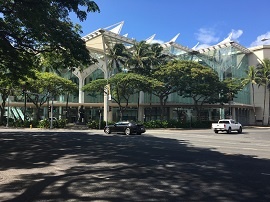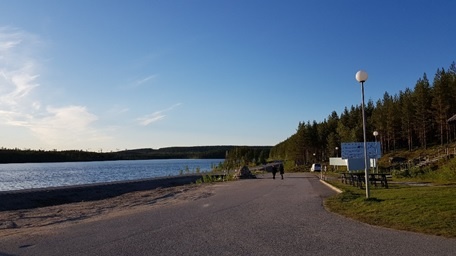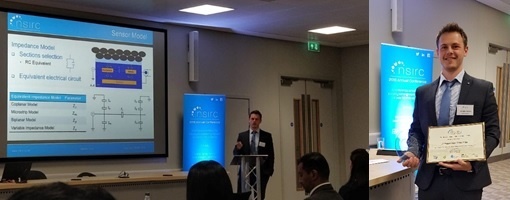Robin Hamer from cohort 3 attended the Safety-II workshop following on from his previous FRAMily training.
The Safety-II workshop was an additional 2 days after the initial 3 from the FRAMily meeting. It was the first of its kind and was a great success.
There were a wide range of people present from different industries – including practitioners and academics. However, there were only 2 people from the nuclear industry, a theme that was apparent in the FRAMily meeting as well. I enjoyed listening to the various Safety-II related research lectures and it was good to see Safety-II principles being applied to many different industries. However, I still feel there is a lack of practical application and no one presented a Safety-II based tool – there was only classic qualitative research such as interviews themed around the principles of resilience engineering.
In addition, there was still some discussion as to what Safety-II actually is, which I found surprising as the concept makes sense to me. It seemed that most people were coming unstuck with the technicalities of Safety-II rather than the bigger picture i.e. Safety-I and Safety-II are complimentary. Networking with other Safety-II enthusiasts was fun and my PhD seemed to pique the interest of a lot of the practitioners and academics as they were keen to find out how my PhD progresses and what I manage to produce.
Whilst at the entire week-long event, I managed to informally ask my potential interview questions during the networking sessions to as many relevant people as possible. These included: academics, practitioners from the steel, maritime, aviation, nuclear, bank of England, royal mint and healthcare. I had some useful responses however I feel the responses are not representative of a random sample of HFE experts. This is because the event was Safety-II focused so naturally everyone at the event were primarily interested in Safety-II and had bought into the concept so to speak. I have summarised responses to the interview questions below:
1) How is risk assessed within your respective industry?
The general consensus was that risk is still managed reactively i.e. we wait for something to go wrong then focus on this to identify and design out its presumed root cause. In addition to this, it was evident that behavioural safety is another focus whereby good behaviour is reinforced and bad habits are punished, removed or reduced. That is very much classical and operant conditioning, and this seemed to be a ‘fad’ according to conversations with people present.
2) What makes managing risk easy/difficult?
It was agreed that managing risk is near impossible and that it is no longer easy to do. This is because socio-technical systems have gotten so large and complicated that we no longer know what is happening at any one time. This means that situations that may arise and eventually cause harm are latent, meaning that generally tiny random factors and precursors add up and eventually cause an accident/incident. At the moment, we are unaware of what these are and we are unable to identify them. Another theme that was made apparent was Work-as-Imagined and Work-as-Done. Feedback from conversations pointed out that the problem is what management think that workers do and what workers do are two completely different things. Therefore, knowing the general day to day work and processes that take place is impossible since there is a massive discrepancy between WAI and WAD. This is further complicated by the fact there are numerous other terminologies for what really happens and what people say happens e.g. Work-as-Prescribed and Work-as-Disclosed. This further complicated understanding what happens and capturing this is even harder.
3) What are the current main issues in your respective industry?
Again, there was a theme with the answers here. It was generally agreed that Safety-II is the saviour – which isn’t surprising as it was a Safety-II themed week. However, it was also agreed that there is a problem with management. Comments were made that suggest that the workforce who participate in operations (on the ground) really buy into the idea of Safety-II and can see the benefit. However, it was clear that management believe that they were currently doing enough and there simply isn’t the time or resources for the incorporation of Safety-II within industries. I probed further to ask why this may be the case. Again, the theme was that it is not an organisational culture issue. It seems that management and those who have the power to implement these new principles and ideas are now older and inflexible in their approach to safety. For me, this isn’t surprising as there is still no evidence that I am aware which shows the benefits of Safety-II in a real-life case study. Therefore, it would seem that the issue is generational rather than cultural. Despite a few early adopters of the theory, the majority of management are still sceptical about Safety-II and therefore are unwilling to give practitioners and academics free reign to implement and develop methods, approaches and tools.
4) What challenges do they propose to the organisation?
It seems that the issue with the Safety-II principle is that it is marketed in a way that allows people to make the assumption that Safety-II replaces Safety-I. In addition, to understand Safety-II you almost need to rewire your thinking of how accidents/incidents which isn’t easy especially if you have spent years understanding risk and safety in the classic Safety-I way. This provided a challenge, to introduce and communicate Safety-II to management and members of these organisations at a higher level in a way that makes them understand that we need this form of safety, but also to ensure that it is complimentary to Safety-I. I believe this is by ditching the terminology Safety-II and using other more attractive words. People agreed with this and some examples are: ‘Golden Days’, ‘The Art of Work’, ‘Mastering HFE’.
5) What are the main fresh ideas emerging within your respective industries?
Since all suggestions were based around Safety-II and Resilience Engineering I will name and discuss them in the context of Safety-II. It was clear that Safety-II needs to be quantified in some way. Since FRAM – Functional Resonance Analysis Method was main theme of the week, it was interesting to see how this could be quantified using a Bayesian Network to give a likelihood or something going right or wrong in a system based on how important a system component is and how dependent other components are on it. This was interesting as in many different scenarios, a probability can be gained and therefore a 'what if?' question can be quantified. Therefore, it is vital that there is a need for a tool/instrument that has Safety-II and Resilience Engineering principles and moreover, interventions that can be used to reinforce or reduce desirable or undesirable actions/behaviours in everyday work.
6) Is there a need for a new method/tool/instrument?
Strangely enough, people did not think there was a need for a new tool or instrument. I disagree though as I definitely think there is an opportunity for a new tool/instrument from more of a practitioner standpoint. People were quite fond of the FRAM method and thought that could be adapted for use in industry. However, I do think the FRAM method is more an exercise for academics and is not fit for use in industry as a main tool. This is because the FRAM essentially is a tool that identified weaknesses and vulnerabilities in a system which provides that opportunity for discussion. Also, FRAM and the interviews that are needed along with the analysis take a lot of time. Despite this, people thought that FRAM was awesome and quite often, discussion was steered towards how great FRAM is all the different ways how it can be used. I believed though that there is a need for a new method, tool or instrument that can be used alongside FRAM.










